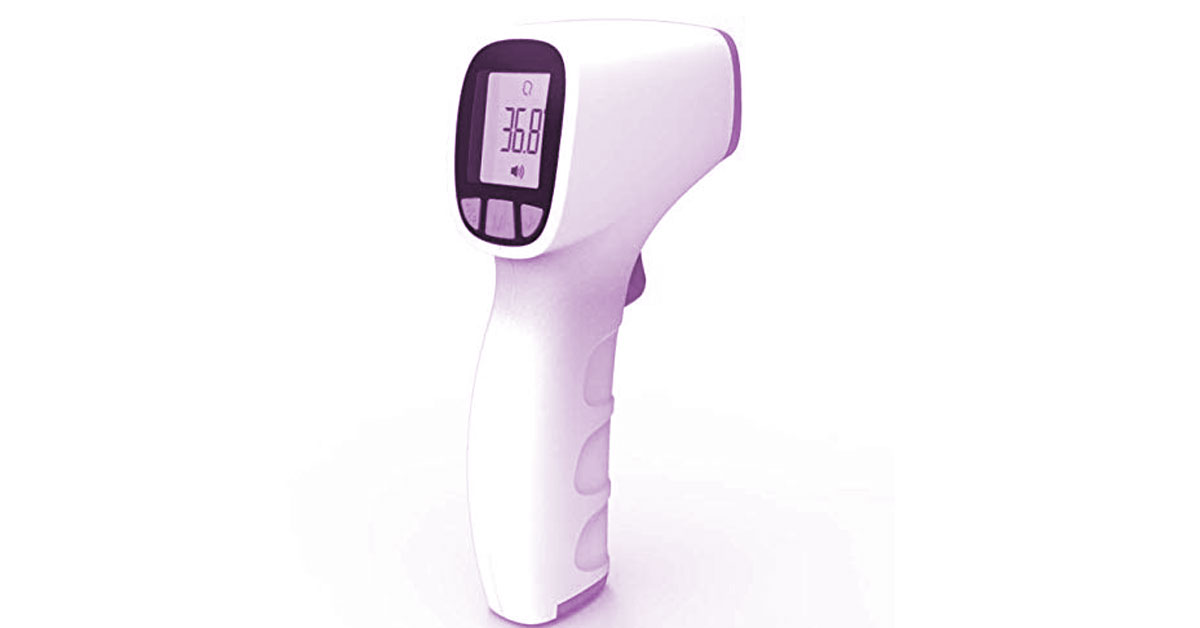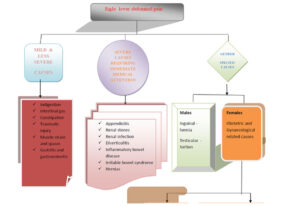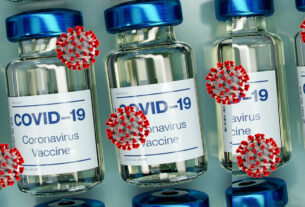Avoid unnecessary fear and worry regarding rising body temperature; know your fever and its management.
Each and every individual has experienced fever; a rise in the body temperature than the normal. There are various fevers associated with different diseases. Let us know more about fever which is encountered by us in one or the other mode of life.
What is a fever?
An elevation in body temperature is referred to as Fever. Body temperature above the normal oral measurement of 98.6°F (37°C) is considered elevated. Until the temperature is above 100.4 (38°C) a person is not considered to have a significant fever medically. When a foreign body invades your body the immune response of your body gets activated and thus results in a rise in normal body temperature. The foreign invaders are viruses, bacteria, fungi, and other toxins. Therefore, most fever is beneficial for the body that helps to fight off infections. The main reason why people treat a fever is that it increases the comfort of the body.
How to grade your fever?
Low fever: 99.8F to 100.8F
Mild fever: 101F to 102F
Moderate fever: 102F to 103F
High fever: 104F and above
Do you know the clinical signs of fever?
The onset of fever is also called a cold or chill stage, during this stage, the individual experiences an increase in pulse and respiratory rate along with complaints of feeling cold, shivering, nail beds appear bluish in color termed cyanotic nail beds, moreover, gooseflesh the appearance of the skin, and cessation of sweating are common during the early onset of fever.
During the course of fever skin feels warm with the absence of chills, but the client experiences malaise, weakness, aching muscles, loss of appetite, drowsiness, restlessness, increased thirst, and so on.
Fever abatement or reduction of fever is shown in the body of the client by sweating and decreased shivering.
How to take care of yourself at home to manage your fever?
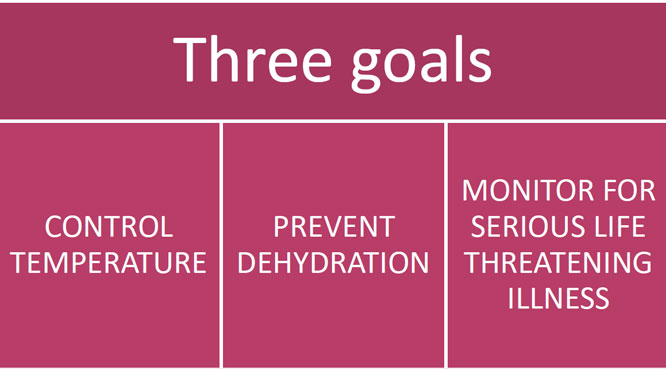
Do you know how body temperature is assessed?
The oral, rectal, axillary, tympanic membrane (nearby tissue in the ear canal ), and forehead are the most common sites for measuring body temperature. Oral temperature is measured frequently as it depicts changing body temperature more quickly. The oral temperature should not be taken as soon as the client has hot food or cold food or drinks as well as smoking because all these can affect the temperature of the mouth and show false results. Thus, in such situations waiting for 30 minutes is ideal before taking oral temperature.
Types of thermometers
Mercury-in-glass thermometers were used from earlier times for measuring body temperature. Although the mercury in these thermometers is minimal, it is hazardous for humans if the glass thermometer breaks. Mercury slowly evaporates into the air and is toxic. Other thermometers like electronic thermometers, chemical disposable thermometers, temperature-sensitive tape, and infrared thermometers are used for assessing the temperature of the body. Oral thermometers have long tips. A rounded thermometer can be used at the rectal sites.
Assessing body temperature
Hold the glass thermometer and flick your wrist to shake it down. Before assessing make sure that the fluid line is below the first number.
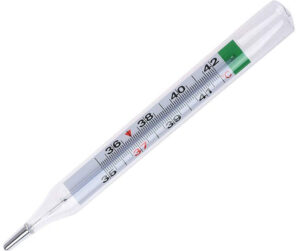
Oral thermometer placement
Place the bulb of the glass thermometer on either side of the frenulum and wait for 2-3 minutes.
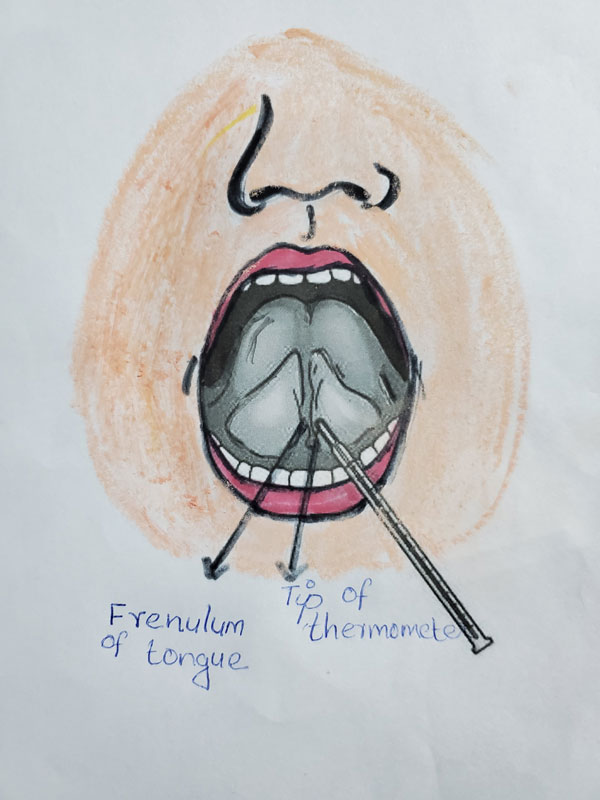
Axillary thermometer placement
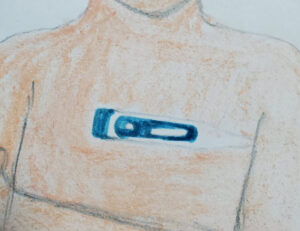
If the axilla is moist, pat it dry and place the bulb of the glass thermometer in the center of the axilla and wait for 6 to 9 minutes. Electronic thermometers indicate that the reading is complete through light or tone.
Rectal thermometer placement
The client should be instructed to take a deep breath and insert the thermometer 3.5 cm in adults for 2-3 minutes.
Tympanic thermometer placement
Pull pinna of ear slightly upward and backward and point probe towards the eardrum.
Some measures are apt for the management of fever….
- The first and foremost step is to check the temperature of the individual with the help of a thermometer.
- Remove extra blankets and warm clothes when the client feels the warmth and remember to provide extra warmth when the client reports a feeling of cold and chill.
- Always keep in mind to make the client comfortable by loosening the tight clothing.
- A good supply of air and proper ventilation should be available for people with fever.
- Provide adequate nutrition and fluids to meet the metabolic demands of the body during fever and to avoid dehydration. Around 2,500-3,000 ml of fluid should be given per day.
- Reduce physical activity by encouraging the client to take complete bed rest so as to decrease heat produced from the body.
- Give the client a sponge bath for 10- 15 minutes with tap water that is neither too warm nor too cold as it helps to lose heat from the body
- Apply a cold compress on the forehead by soaking a washcloth in a bowl of cool water and squeezing excess water and placing it on the forehead. As the washcloth becomes dry, soak it again in a bowl of water and put it on your forehead again. A cold compress should be provided for 10- 15 minutes which helps to lose heat from the body and cooling the body temporarily and reduce fever faster.
❖ As dryness of the mouth is common during a fever it is recommended to practice good oral hygiene practices to keep the mucous membrane moist.
❖ The clothes are worn and the bed linens used by the client should be dry and clean always. - Administer antipyretic drugs that help to reduce fever. For example drugs like acetaminophen can be administered as ordered by the physician.
- Consult the physician if the fever does not become normal within 3 days after following the above-mentioned measures
How to prevent dehydration?
It is quite natural that during the time of fever extra water and electrolytes are lost from the body. To compensate for the loss of water around 8 to 10 glasses of water should be consumed every day. Clear fluids without caffeine should be taken, as caffeinated drinks increase the urine output and lead to dehydration. Tea should also be avoided.
Why is there a need for keen observation of clients with fever?
An individual with fever should be observed carefully for identifying any immediate deterioration of health during the course of the fever. As a result, prompt management can be provided and avoid life-threatening illnesses.
Dietary modification during fever
Readily digestible foods should be given. A bland diet is used for febrile conditions. Small frequent meals are recommended instead of three or four meal patterns. Milk with glucose can be given once in 3 hours. Fruit juices with glucose should also be given 2 or 3 times daily. Breakfast should never be avoided and light dinner ought to be taken. Avoid nonvegetarian foods, oily foods, fast foods, and junk foods.
✓ About 50% of the Caloric requirement is increased during the course of the fever. High carbohydrate drinks and cereal gruels can be administered to clients in small frequent feeds.
✓ As there is increased loss of tissue proteins, 50% of extra protein should be taken into the diet. Milk and egg proteins added to the food menu can meet the nutritional need of the client. High protein beverages and soups are preferred along with protein supplements.
✓ Carbohydrates should consist of glucose, sucrose, and starch. Cereals and cereal flours can be cooked as pudding along with the addition of milk, eggs, and sugar and given to the client. Starchy gruels can also be included in the diet.
✓ Fats like ghee, butter, and vegetable oils should be avoided with food during fever as it interferes with digestion. These should be included in food as soon as fever is controlled as these are rich sources of energy.
✓ Vitamin requirement increases during fever. Foods rich in vitamin C (citric acid) and vitamin A ought to be supplemented in the diet. Fruits, vegetables, and green leafy vegetables should be included in the diet. Citrus fruits are good for people with fever (for eg- lemon, grapes, orange, pineapple, etc)
✓ Calcium and phosphorus requirements need to be met by taking milk daily. Potassium requirements will also be met with the intake of milk and fruit juices.
✓ Water intake in the form of fluids like milk, glucose water, fruit juices, etc should be 3 to 5 liters per day in case of adults as per climatic conditions.
✓ Electrolytes like sodium chloride have to be supplemented which can be met by the consumption of salty juices (eg- lime juice with salt) and soups.
Food should be served for clients with fever with the utmost care and in a hygienic way. Avoid cold foods and encourage freshly prepared hot food. Washing raw fruits and vegetables with clean water thoroughly is good for health.
Points to remember while getting treated for fever…
❖ If fever is due to viral infection there is no need to be treated with antibiotics. Most fevers subside by taking appropriate rest and antipyretic medications as well as other remedial measures. Instead of panicking with an increase in body temperature and consuming too much medicine, it is always advisable to adopt scientific methods.
❖ Complete bed rest is essential when a client suffers from fever, which in turn helps to decrease the body temperature and prevent secondary bacterial infections and other life-threatening illnesses.
❖ Rest should be taken in a well-ventilated room with good air circulation and ventilation. Fever leads to dehydration. To maintain a stable body temperature it is essential to provide a cold sponge for the body with cold water very often. Acetaminophen is a safe antipyretic but painkillers like Aspirin and Ibuprofen should be avoided as it may cause harmful effects in the body.
❖ Antibiotic treatment is required for viral fevers only if the client has a bacterial infection associated with the viral fever. Fever that does not subside, increased mucus production from the nose which is thick purulent, and yellowish in color, yellowish discharge mixed with blood while coughing, increased WBC count in blood, etc are the signs and symptoms of bacterial infection. While taking antibiotic therapy, strictly adhere to the regimen as prescribed by the physician and complete the full course of medicine as prescribed.
❖ High-risk group individuals (persons with chronic diseases), immuno- compromised persons need hospitalization for treating fever.
Therefore, knowing your fever and managing it scientifically is very important.
